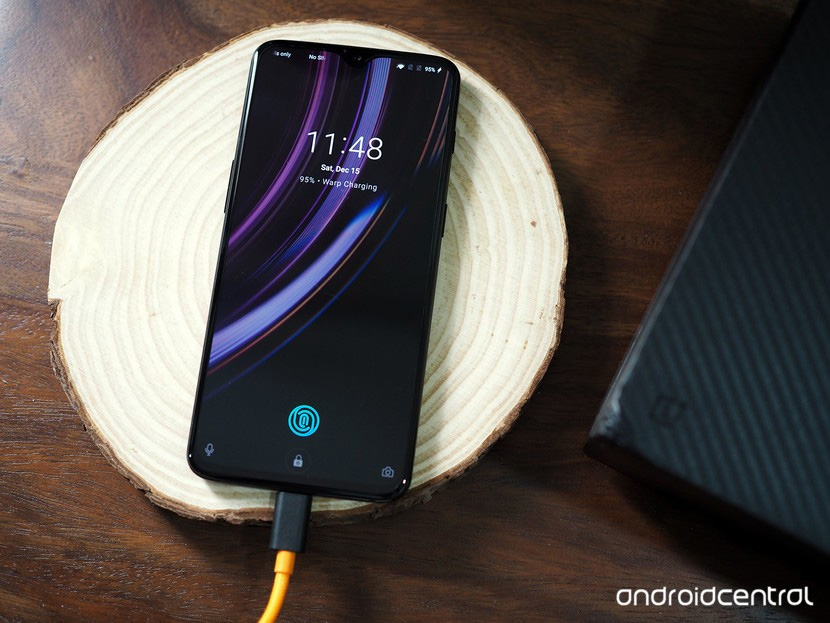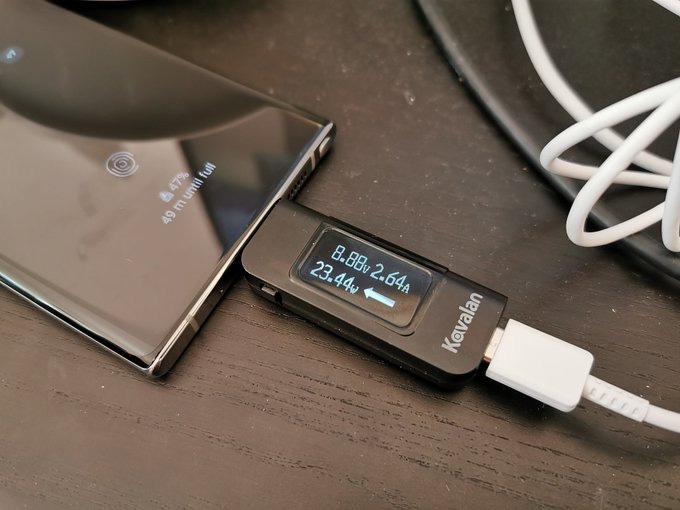Based on materials from androidcentral.com
The Samsung Galaxy Note 10+ is the first smartphone to not only support a charge of up to 45W, but also use an open system rather than a proprietary one. Although for maximum performance, you will most likely need to buy a charger and cable from Samsung. Daniel Bader of Android Central tried to figure out the reasons why the Galaxy Note 10+ can charge faster than any competitor in the market, or not reach the promised 45W of charging current.

Samsung got so burned with the Galaxy Note 7's battery, both literally and figuratively, that for many years it made safety a top priority, sacrificing the convenience of users associated with fast battery charging. But this year, the Samsung Galaxy Note 10+ hit the market, making it the first smartphone on the market that can be charged with 45 watts. Most buyers still focus on maximum battery capacity rather than charge rate, forgetting that capacity is just one of three key features that determine how comfortable a phone is to use. The other two are the discharge rate (how quickly the components of the smartphone absorb the battery's energy) and the charge rate (the amount at which the battery can recover its energy).
To date, most fast battery charging systems are based on proprietary standards created by various companies, which allows them to promote their own smartphones in the market. At the same time, they have full control over both the AC adapter and the cable that connects to the device. The two most common systems are SuperCharge from Huawei with up to 40W, achieved with the Huawei P30 Pro, and Super VOOC from OPPO with up to 50W. The latter has another Warp Charge option for the OnePlus 7 Pro with up to 30W of power.
Of course, each of these technologies has its own characteristics. SuperCharge requires a dedicated network adapter and (required) cable. At the same time, the charger itself is significantly larger than those 10-W solutions to which we have become accustomed in recent years. OPPO's Super VOOC is even more restrictive, invading the design of the smartphone itself. She needs to split the battery into two cells, otherwise the maximum charging rate will not be achieved.

There are also alternative solutions, some of which are offered by Samsung. Prior to the Samsung Galaxy S10 5G, all devices from the company were limited to 15W charging current. In this case, a variation of the Quick Charge 2.0 standard from Qualcomm, called Fast Adaptive Charging technology, was used. Galaxy S10 5G almost doubled this parameter, suggesting charging with 25 W current. But, unfortunately, for the rest of the Galaxy S10 line, which is much more common, no innovations were offered. Plus, even for a 15W charge, Samsung requires its own AC adapters and cables.
Now let's look at a pair of Samsung Galaxy Note 10 and Galaxy Note 10+. For the first, the maximum charging current is 25 W. For the second – 45 watts. In this case, in both cases, it is said about using standard USB-C cables. In theory, this suggests that you can easily pick up third-party chargers and cables for them, which will provide a really fast battery charge. However, this is not the case yet. To prevent overheating of the battery and for the overall safety of the system, both smartphones can only be charged at maximum current when using the PPS version of the USB Power Delivery standard, or the Programmable Power Supply. In short, this standard allows you to change the voltage and amperage supported by USB-PD, usually 5V / 3A or 9V / 2A. This issue is discussed in more detail in this article.
Without going into technical details, the PPS was created with the aim of minimizing energy losses, including heating. This is achieved by slowly increasing the voltage and decreasing the current in the process of charging the battery as it approaches 100% of the nominal capacity. The 25-watt charger, which is in the box for both the Galaxy Note 10 and the Galaxy Note 10+, produces a maximum of 11 V and 2.25 A, which gives a charging current of 24.75 W. The 45W charger is not included, you need to buy it separately from the Samsung store, and it will cost about $ 50. Its current parameters at the maximum charge rate are 15 V and 3 A.
However, before turning to Samsung branded chargers, Daniel decided to see what would happen if he went to the help of third-party manufacturers. His assortment included USB-PD adapters from Anker, Aukey, RAVPower, Huawei, Mophie and other manufacturers. Imagine his disappointment when he saw that, despite the technically supported charging current of up to 45 W, in no case was it possible to overcome the 15 W bar. When using the charger and cable from the kit, the current immediately increased to 25 watts of power.


Then it's time to test what happens if you don't change your network adapter but use a third-party cable. The cable that came with the Huawei Matebook X Pro was used first, and the charging current immediately returned to 15W. As it turns out, Samsung not only requires a PPS network adapter, but also a USB-C cable bearing the E-Marker. In short, you need a cable that is certified to transmit power up to 100 W and data transfer rates up to 10 Gb / s and is based on the latest USB 3.1 Gen 2 standard. The problem is that the cable looks like it. cannot determine whether he has these certificates and whether he has an E-token. You can probably find out about this by the small chip that is located at the plug of this cable, but you are unlikely to open its insulation to check.
How to be? E-mark is not a brand or a specification, it is just part of the USB 3.1 Gen 2 standard. This will also not always be indicated directly on the cable, so you will have to look for USB-C to USB-C cables that claim to transfer data at a speed up to 10 Gbps. Such cables must have an E-mark in order to receive the corresponding certificate, if, of course, we are talking about cables with a certificate, and not just a lettering on the package. The easiest way is to choose cables certified Apple: all of her USB-C to USB-C cables have an E-mark. In any case, such a cable will be more expensive, but the speed is worth it.

As for the network adapter, everything is simpler with markings, but there are not so many chargers with PPS support on the market. This standard has appeared recently, and most manufacturers of chargers are in no hurry to give preference to it, since there are not many devices on the market that would require it. Probably, the situation will change soon, but for now you can only order a proprietary charger from the Samsung store and use the supplied cable. In this case, you will find insanely fast battery charging from 0% to 100% in forty minutes.
Like this. It turns out that, technically, Samsung was the first to use fast charging to support the open standard. But in fact, buyers still have no choice, since it happened ahead of the market and the industry simply does not have time to react. This is much better than tying a smartphone to a proprietary system, and although this approach cannot justify itself at the moment, it's up to the future.
